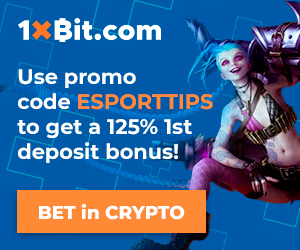Esports Live Scores and Results
BO3 - 25 Jan - 11:00
LPL spring split 2022
TT Gaming
No spoiler
mode
VS
No spoiler
mode
Anyone's Legend
BO3 - 25 Jan - 09:00
LPL spring split 2022
Ultra Prime
No spoiler
mode
VS
No spoiler
mode
Invictus Gaming
BO3 - 24 Jan - 12:00
LPL spring split 2022
Rare Atom
No spoiler
mode
VS
No spoiler
mode
Bilibili Gaming
BO3 - 24 Jan - 11:00
DPC CN 2021/22 Tour 1: Division I
Royal Never Give Up
No spoiler
mode
VS
No spoiler
mode
Team Aster
BO3 - 24 Jan - 09:00
LPL spring split 2022
Oh My God
No spoiler
mode
VS
No spoiler
mode
LGD Gaming
BO3 - 24 Jan - 00:30
LCS Lock-In 2022
Cloud9
No spoiler
mode
VS
No spoiler
mode
Counter Logic Gaming
BO3 - 23 Jan - 23:40
DPC SA 2021/22 Tour 1: Division I
Beastcoast
No spoiler
mode
VS
No spoiler
mode
King of Kings
BO3 - 23 Jan - 21:30
LCS Lock-In 2022
Evil Geniuses
No spoiler
mode
VS
No spoiler
mode
Golden Guardians
BO3 - 23 Jan - 20:00
DPC SA 2021/22 Tour 1: Division I
Hokori
No spoiler
mode
VS
No spoiler
mode
NoPing esports
BO7 - 23 Jan - 19:00
Rocket League Championship Series 2021-22 EU Regional Event 1
Team Queso
No spoiler
mode
VS
No spoiler
mode
Dignitas
BO7 - 23 Jan - 18:00
Rocket League Championship Series 2021-22 EU Regional Event 1
Team BDS
No spoiler
mode
VS
No spoiler
mode
Dignitas
BO7 - 23 Jan - 16:45
Rocket League Championship Series 2021-22 EU Regional Event 1
Dignitas
No spoiler
mode
VS
No spoiler
mode
Endpoint
BO7 - 23 Jan - 16:00
Rocket League Championship Series 2021-22 EU Regional Event 1
Team Queso
No spoiler
mode
VS
No spoiler
mode
Team BDS
BO3 - 23 Jan - 15:00
DPC EEU 2021/22 Tour 1: Division I
HellRaisers
No spoiler
mode
VS
No spoiler
mode
Virtus pro
BO3 - 23 Jan - 11:45
DPC CN 2021/22 Tour 1: Division I
Invictus Gaming
No spoiler
mode
VS
No spoiler
mode
PSG.LGD
BO3 - 23 Jan - 11:00
LPL spring split 2022
Victory Five
No spoiler
mode
VS
No spoiler
mode
Top Esports
BO3 - 23 Jan - 11:00
LCK spring split 2022
Kwangdong Freecs
No spoiler
mode
VS
No spoiler
mode
DragonX
BO3 - 23 Jan - 09:00
LPL spring split 2022
Royal Never Give Up
No spoiler
mode
VS
No spoiler
mode
Invictus Gaming
BO3 - 23 Jan - 08:00
LCK spring split 2022
T1
No spoiler
mode
VS
No spoiler
mode
Liiv SANDBOX
BO3 - 23 Jan - 08:00
DPC CN 2021/22 Tour 1: Division I
Team Aster
No spoiler
mode
VS
No spoiler
mode
Royal Never Give Up
Our users can check out all the Esports live scores and results on multiple LOL, CSGO, DOTA2 games at once in the livescore section. You do not need to have many tabs open at the same time and can just bookmark this page to stay updated with all your favorite matches and games. The livescore feature allows our users to keep track of ongoing matches and possibly place live bets to make a quick win. Constantly following the live games allows users to better understand the game and which is always helpful for placing winning bets.
Esports News
Taking Back the Crown: The European Teams Coming to 2022 to Rival Natus Vincere
- 0
- 240

Funspark ULTI 2021 Finals Preview
- 0
- 430
The Teams Pushing North American Counter-Strike Forward in 2022
- 0
- 1625

The Teams Leading the Brazilian Counter-Strike Comeback in 2022
- 0
- 264

Many lows, few highs; FaZe Clan 2021’s retrospective
- 0
- 94

OG 2021 in Retrospective: A Year to Forget
- 0
- 1126







